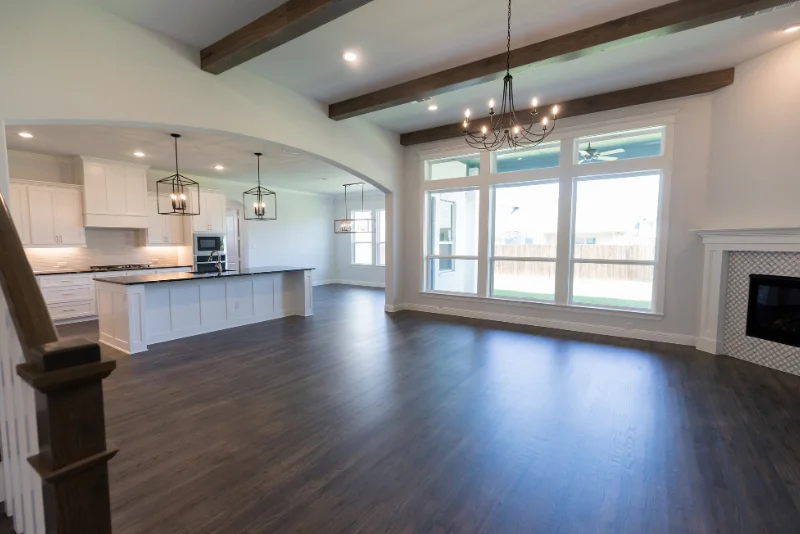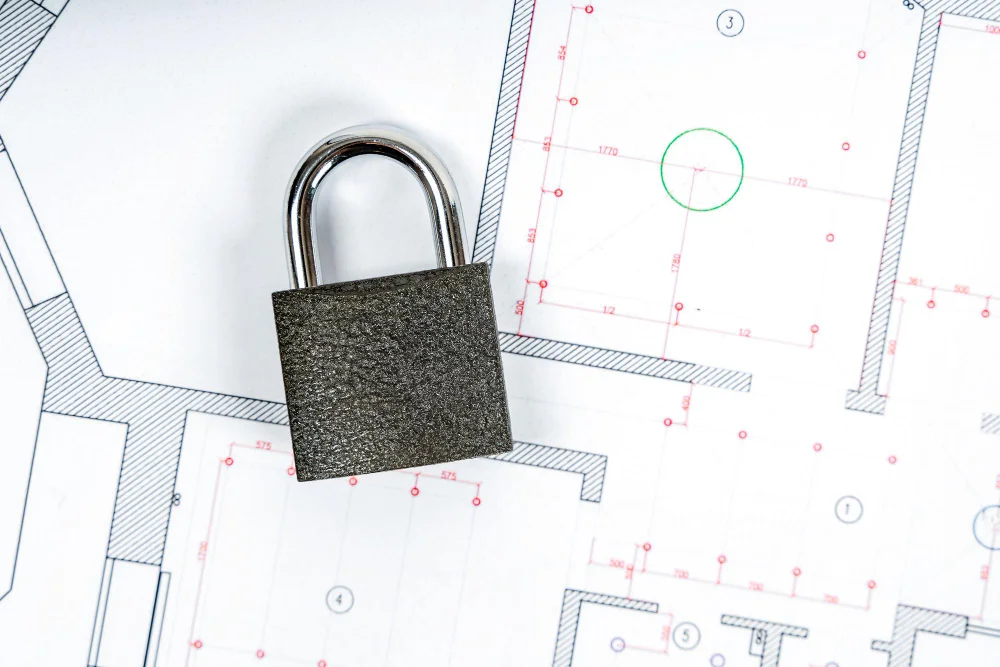Protecting empty properties is essential to prevent vandalism, theft, and neglect. This guide walks you through a step-by-step approach to keeping your vacant space secure and well-maintained. Whether it’s a home for sale, a vacation property, or a commercial space between tenants, these practical strategies will help you safeguard your investment and maintain peace of mind—whether you’re managing it alone or with a team.
Why Your Property Might Be Vacant In the First Place
There are many reasons a property may sit unoccupied—each carrying its own set of risks. You might be in the process of selling your home, leaving it empty during showings or while waiting for a buyer. Vacation homes often sit vacant for long stretches between visits. Commercial buildings may be temporarily unoccupied during tenant turnover, renovations, or sublease arrangements. Even new construction or investment properties can remain empty for weeks or months. Regardless of the reason, vacant properties are more vulnerable to break-ins, vandalism, and unauthorized entry—making proactive security planning essential.
Assessing Vulnerabilities – Profiling Your Empty Property

Evaluating your empty property involves a detailed examination of its strengths and weaknesses, helping you identify areas needing immediate attention. Begin by taking stock of all potential entry points, such as doors, windows, and even vents. Each element should be assessed for quality and security features; consider installing better locks or alarm systems where necessary. This proactive approach not only enhances security but also protects your property from deterioration over time.
Identifying High-Risk Areas
Focus on specific zones around your property that may attract unwanted attention. Areas with poor lighting, overgrown vegetation, or limited visibility can become hotspots for criminal activity. Identify these locations and take measures to improve them—such as trimming back bushes and adding outdoor lighting—to deter potential intruders. Strong deterrents coupled with heightened visibility improve safety significantly.
Protecting Empty Properties By Understanding Local Crime Trends
Pinpointing local crime trends aids in tailoring your security measures effectively. Research statistics on crime rates in your area, noting patterns in property crime, vandalism, or trespassing incidents. Websites like local police department portals or neighbourhood watch programs can provide you with crucial insights. Engaging with local community groups can further illuminate nuances in crime trends, helping you adapt your security strategy accordingly.
For example, if your area has a history of break-ins during specific months or times of day, you can prioritize your security measures accordingly. Perhaps investing in surveillance cameras or motion detection lights around those high-risk periods will yield a greater return on your efforts. Additionally, consider connecting with local law enforcement to receive updates or alerts related to crime in your neighbourhood, further enhancing your awareness and preparation. This informed approach ensures your protection measures are not just reactive, but proactively counter local threats.
Strategic Planning: Crafting a Customized Security Blueprint

Your security strategy begins with an individualized blueprint that caters to your property’s specific needs. This plan should encompass a holistic view of your property’s vulnerabilities while integrating proactive measures to deter potential threats. Factors such as location, past incidents in the area, and the property’s design influence your security approach. By considering these elements, you can tailor a comprehensive protection strategy, ensuring both immediate and long-term safety for your vacant property.
Setting Clear Objectives for Property Protection
Establishing clear objectives is necessary for effective property protection. Determine whether your main goals are to prevent theft, maintain structural integrity, or reduce liability risks. Having defined targets streamlines the security planning process and allows you to allocate resources effectively, focusing on the most pressing threats unique to your situation. This structured approach ensures that every security measure serves a specific purpose in safeguarding your property.
Choosing the Right Security Measures and Technologies
Your choice of security measures and technologies will significantly impact your property’s safety. Begin by evaluating various options, such as surveillance cameras, alarm systems, access control solutions, and even smart technology that can be monitored remotely. Prioritize systems that offer real-time alerts and updates, so you remain in the loop regardless of your physical presence. For instance, integrating motion-detecting cameras with high-definition recording capabilities helps you capture any suspicious activity, making it easier to address threats swiftly.
It’s advisable to choose a combination of physical security measures and digital technologies for optimal protection. High-definition cameras provide visual verification, while motion sensors can trigger alerts, creating an immediate response system. Access control systems, such as keycards or biometric locks, restrict unauthorized entry effectively. Additionally, consider investing in cloud-based security platforms that allow you to monitor activity from your smartphone or computer, enabling quick action and peace of mind no matter your location. The right mix will enhance your property’s security and discourage potential trespassers.
Fortifying Physical Barriers: Enhancing Property Defence

Strengthening the physical boundaries of your property is pivotal in creating an effective defence against unauthorized access and potential vandalism. From fences to reinforced doors, each structural element adds a layer of security that deters potential intruders. It’s about assessing weaknesses, enhancing them, and ensuring your property stands resilient against unforeseen threats.
The Role of Perimeter Security For Protecting Empty Properties
A robust perimeter security system acts as the first line of defence for your empty property. Utilizing elements such as sturdy fencing, gates, and appropriate landscaping, you can effectively control access points and create a visual barrier. Adding lighting along the perimeter not only enhances visibility but also serves as a deterrent against trespassers, improving your property’s overall safety profile.
Effective Use of Locks, Alarms, and Surveillance Cameras
Implementing high-quality locks, alarms, and surveillance cameras is crucial in safeguarding your property. Invest in deadbolts, electronic locks, and security systems that offer real-time alerts to keep your property secure even when you’re not present. Surveillance cameras, especially those equipped with motion detection, provide visual monitoring and act as a significant deterrent against criminal activity. The combined use of these tools strengthens your defence strategy profoundly.
High-quality locks like deadbolts or smart locks provide not only physical security but also technological features such as remote access and monitoring. Alarm systems equipped with motion sensors can alert you or the authorities at the first sign of trouble, significantly reducing response time. Surveillance cameras add an additional layer by allowing you to monitor activities remotely and store footage for evidence if needed. The presence of visible cameras alone can discourage intruders from targeting your property, making your investment in this technology a vital part of your security strategy.
Smart Alerts: Using Security Apps to Monitor Unauthorized Entry
Modern security doesn’t stop at locks and cameras—mobile technology now plays a crucial role in protecting your property. Security apps connected to smart sensors, motion detectors, or surveillance systems can instantly alert you when someone enters your property without authorization. Whether it’s a door opening, glass breaking, or unusual movement detected inside a vacant home or commercial space, these real-time notifications let you act fast—whether that means contacting authorities, checking live footage, or activating alarms remotely. For owners of empty or seasonal properties, these apps provide peace of mind and a direct line of awareness, no matter where you are.
Building a Community Support Network
Protecting an empty property isn’t something you have to do alone. Getting your neighbours, local authorities, and even nearby local businesses involved can make a big difference. When everyone’s on the same page, it creates a stronger sense of community and shared responsibility. By keeping the lines of communication open, you can share concerns, get tips on what’s worked for others, and even set up a simple watch system. It’s a practical, low-cost way to boost security—and it helps everyone feel a little safer.
Collaborating with Neighbours and Local Authorities
Working hand-in-hand with your neighbours and local authorities amplifies your security efforts. Organizing neighbourhood meetings to discuss concerns about vacant properties encourages active participation and unified action. Collaborating with local law enforcement or community associations can ensure constant communication and faster responses to suspicious activities, ultimately enhancing the safety of both your property and the neighbourhood.
Utilizing Local Resources and Support Groups
Leveraging local resources and support groups can significantly augment your security strategy for vacant properties. Many communities have organizations dedicated to property management and safety that provide valuable insights, resources, and assistance. For example, community policing initiatives often have dedicated officers who can offer advice tailored to your specific area, as well as partnerships with local volunteer groups that might help monitor vacant homes. Connecting with these organizations not only strengthens your knowledge base but can also foster a sense of camaraderie within the community to collectively combat property crime.
Monitoring and Maintenance: Proactive Property Oversight

Strategic oversight of your vacant property plays a crucial role in its security and overall well-being. By maintaining a vigilant watch, you can address issues before they escalate, deter potential threats, and keep your property in excellent condition. This section focuses on establishing a comprehensive plan that emphasizes frequent inspections and targeted maintenance, ensuring your property remains safe, secure, and visually appealing, even in its empty state.
Routine Inspections, Upkeep Protocols, and Mobile Patrol Integration
Routine inspections are key to spotting issues before they escalate. Whether you’re managing the property yourself or using professional mobile patrol services, regular checks help catch signs of vandalism, environmental damage, or forced entry early. Schedule monthly visits—or more frequently for high-risk areas—and pair them with preventative maintenance like clearing gutters, inspecting for leaks, and testing alarms and locks. Mobile patrol units add an extra layer of visibility and deterrence, providing random or scheduled drive-by and on-foot checks. Be sure to document all findings to monitor changes and respond to concerns promptly, keeping your property secure and well-maintained.
Adapting Security Strategies Based on Observations
Your observations during inspections can inform adaptations to your security measures. Note any patterns of activity, local crime trends, or perceived vulnerabilities, and adjust your approach accordingly. For instance, if you notice signs of tampering with locks, consider reinforcing entry points with higher-grade security hardware. Engaging with neighbourhood watch programs or local law enforcement can provide insights that help you bolster your property’s defences.
Adapting your security strategies requires a proactive mindset. Engage neighbours to share information about unusual activity and discuss potential security improvements. Install motion-detecting lights or surveillance cameras in areas identified as riskier during inspections. If the surrounding area experiences an increase in break-ins, consider arranging for more frequent mobile patrols or enlisting a property management service for enhanced oversight. Your flexibility in response to real-world conditions can make a substantial difference in the security of your property.
Protecting Empty Properties: Conclusion
Transforming your vacant property into a secure asset involves a systematic approach that includes assessing vulnerabilities, implementing appropriate security measures, and maintaining regular inspections. By following this step-by-step guide, you can effectively protect your property from vandalism, squatters, and other risks. Taking action not only safeguards your investment but also provides peace of mind, ensuring that your property remains in optimal condition and ready for future use.
